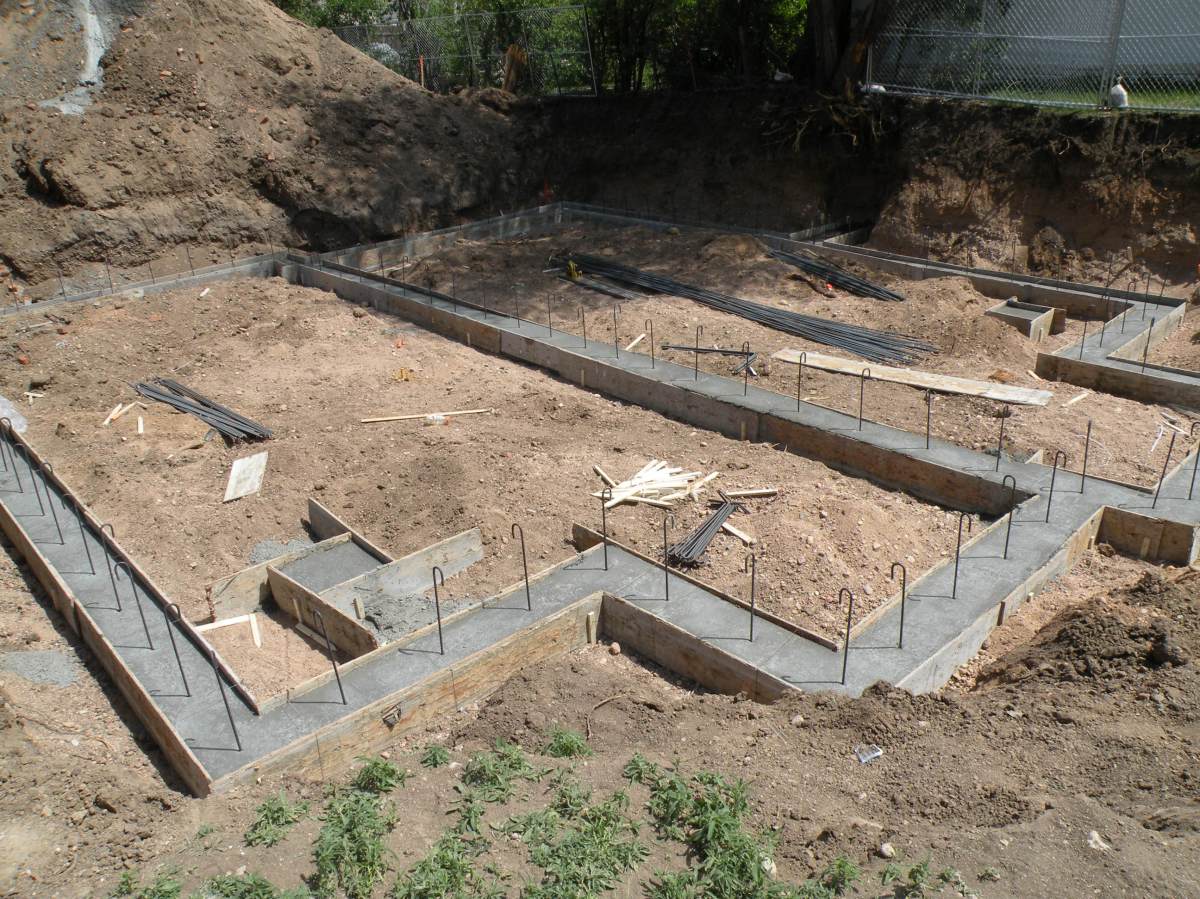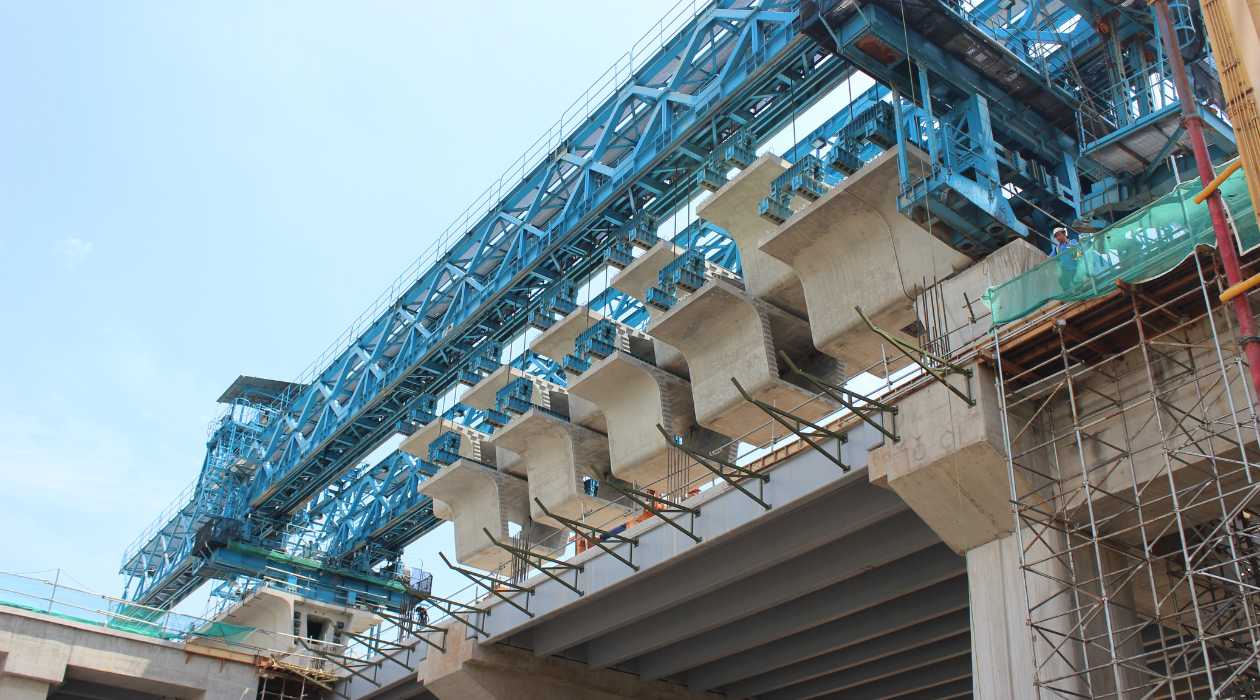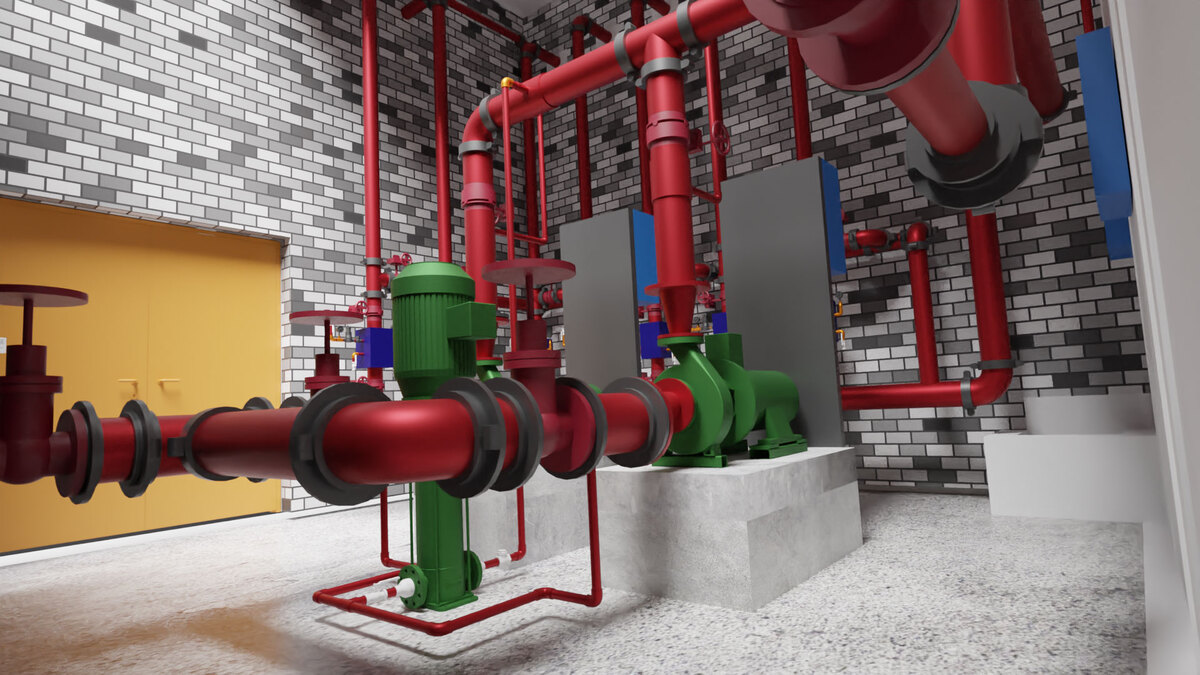Home>diy>Building & Construction>What Is Construction Budget


Building & Construction
What Is Construction Budget
Modified: January 6, 2024
Learn the essentials of creating a construction budget for building construction projects. Find tips, techniques, and examples to effectively manage costs and maximize your project's success.
(Many of the links in this article redirect to a specific reviewed product. Your purchase of these products through affiliate links helps to generate commission for Storables.com, at no extra cost. Learn more)
Introduction
The construction industry plays a vital role in our modern world, shaping the cities we live in and creating the structures that surround us. From towering skyscrapers to residential homes, every construction project requires careful planning and execution. One critical aspect of this process is construction budgeting, which serves as the financial blueprint for a project.
Construction budgeting involves estimating, allocating, and controlling the costs associated with a construction project. It is the process of determining how much money should be allocated to each aspect of the project, from materials and labor to permits and overhead expenses. A well-prepared construction budget ensures that the project stays on track financially and minimizes the risk of overspending.
In this article, we will explore the importance of construction budgeting, the components that make up a construction budget, the factors that can influence project costs, and the steps involved in creating an effective budget. We will also discuss the benefits of proper construction budgeting, the common challenges that may arise, and strategies for managing construction budgets more efficiently.
Whether you are a construction professional, a project manager, or a homeowner planning a renovation, understanding construction budgeting is crucial. It allows you to establish realistic financial goals, make informed decisions, and ensure the successful completion of your project within budgetary constraints.
So, join us as we delve into the world of construction budgeting and discover the key elements that contribute to its successful implementation. By the end of this article, you will have a comprehensive understanding of construction budgeting and the tools to create and manage your own budget effectively.
Key Takeaways:
- Construction budgeting is crucial for financial control, resource allocation, and risk management in construction projects. Accurate cost estimation, proactive monitoring, and effective communication are key to successful budget management.
- Effective construction budgeting benefits project stakeholders by providing financial control, accurate cost estimation, and improved project performance. Strategies such as realistic budget setting, regular monitoring, and proactive risk management contribute to successful project outcomes.
Definition of Construction Budget
A construction budget can be defined as a detailed financial plan that outlines the estimated costs and expenses associated with a construction project. It serves as a roadmap for managing and controlling the financial aspects of the project from start to finish. The construction budget provides a clear outline of the allocated funds for various components of the project, such as materials, labor, equipment, permits, and contingencies.
The construction budget serves as a crucial communication tool between stakeholders involved in the project. It helps ensure that all parties, including the owner, contractors, and subcontractors, have a realistic understanding of the financial requirements and constraints for the project. By having a well-defined budget, all parties involved can work towards a common financial goal and make informed decisions during the construction process.
The construction budget comprises several key elements:
- Direct Costs: These costs include the materials, labor, equipment, and any other expenses directly related to the construction work.
- Indirect Costs: Indirect costs cover expenses that support the construction project, such as permits, insurance, utilities, and site maintenance.
- Contingency Funds: Construction projects often encounter unexpected challenges or changes that require additional funds. Contingency funds are set aside to address such situations.
- Profit Margin: A profit margin is typically included in the construction budget to account for the contractor’s or builder’s profit.
Additionally, the construction budget may also consider other factors, such as financing costs, design fees, legal fees, and any specialized consultants required for the project.
It is important to note that the construction budget is not a fixed document. It is a dynamic tool that evolves throughout the project’s lifecycle. As the project progresses, the budget may need to be adjusted based on changes in material prices, labor costs, or scope modifications. Regular monitoring and tracking of expenses are essential to ensure that the project remains within the allocated budget.
In summary, a construction budget is a comprehensive financial plan that outlines the estimated costs and expenses associated with a construction project. It serves as a roadmap for managing finances, facilitating communication between stakeholders, and ensuring the successful completion of the project within financial constraints.
Importance of Construction Budgeting
Construction budgeting is a vital aspect of any construction project, regardless of its size or complexity. It plays a crucial role in ensuring the project’s overall success and delivering it within the allocated financial resources. Here are several key reasons why construction budgeting is of utmost importance:
- Financial Control: Construction budgeting provides a framework for controlling project costs and managing financial resources effectively. It allows project managers and stakeholders to track expenditures, identify potential cost overruns, and implement necessary measures to stay within budget. Without a budget, projects risk going overboard financially, leading to significant financial strain and potential project delays.
- Goal Setting: A construction budget serves as a tangible financial goal for a project. It helps set realistic expectations and objectives for all parties involved. By having a clear budget, stakeholders can align their efforts and make informed decisions based on the financial constraints defined. It also provides a foundation for measuring project progress and performance against financial goals.
- Resource Allocation: Effective budgeting ensures the proper allocation of resources, such as labor, materials, and equipment, throughout the construction project. With a detailed budget in place, project managers can optimize resource utilization, ensuring that the right resources are available at the right time. This helps minimize waste, maximize efficiency, and improve overall project productivity.
- Risk Management: Construction projects are prone to uncertainties, ranging from design changes to unforeseen construction challenges. A well-planned budget includes contingency funds specifically allocated to address unexpected situations. This helps mitigate risks by providing a cushion for additional expenses and reduces the possibility of project disruptions or financial setbacks.
- Decision Making: Construction budgeting provides stakeholders with critical information that aids in making informed decisions throughout the project lifecycle. Budget reports and forecasts enable project teams to evaluate the financial impact of various decisions, such as changes in project scope or material substitutions. This ensures that decisions are aligned with the project’s financial objectives and minimize the potential for costly mistakes.
Overall, construction budgeting is an essential tool for maintaining financial control, setting clear goals, allocating resources efficiently, mitigating risks, and facilitating informed decision-making. It enables project stakeholders to monitor and manage project costs effectively while ensuring the project’s timely completion within the allocated budget. By prioritizing budgeting as an integral part of project management, construction professionals can enhance their ability to deliver successful and financially sound projects.
Components of a Construction Budget
A construction budget consists of several key components that outline the various costs and expenses involved in a construction project. These components provide a comprehensive breakdown of the financial resources required to complete the project successfully. Here are the main components typically included in a construction budget:
- Direct Costs: Direct costs constitute the expenses directly associated with the construction work itself. This includes the cost of materials, such as lumber, concrete, plumbing fixtures, and electrical components. It also covers labor costs, including wages, salaries, and benefits for construction workers, contractors, and subcontractors. Additionally, direct costs may include equipment rental or purchase, as well as any specialized tools or machinery required for the project.
- Indirect Costs: Indirect costs are the expenses that support the construction project but are not directly tied to the physical construction work. This includes permits and fees required for regulatory compliance and government approvals. It also encompasses costs for insurance coverage, utilities (water, electricity, etc.), temporary facilities on-site (portable toilets, temporary fencing), and site maintenance. Indirect costs ensure the smooth functioning and safety of the construction site throughout the project duration.
- Contingency Funds: Construction projects are susceptible to unexpected events, changes in scope, or unforeseen challenges. Allocating a portion of the budget as contingency funds helps account for such uncertainties. Contingency funds act as a buffer to cover unforeseen costs as they arise, reducing the risk of budget overruns and minimizing the financial impact of unforeseen circumstances during construction.
- Professional Fees: Professional fees cover the expenses associated with hiring external consultants or experts for specific project requirements. This may include architects, engineers, designers, and other professionals involved in the project’s planning and design phases. Their expertise helps ensure compliance with building codes, regulations, and standards, contributing to the overall success and quality of the construction project.
- Financing Costs: If the construction project is financed through loans or other financial arrangements, financing costs need to be considered. This includes interest payments, loan origination fees, and other charges associated with borrowing the necessary funds for the project. Including financing costs in the budget provides a more accurate representation of the overall project expenses and helps in managing cash flow throughout the construction process.
- Profit Margin: The profit margin is a component that is typically added to the construction budget. It represents the expected profit for the contractor or builder. The profit margin accounts for the business expenses, risks, and the expertise brought to the project. Including a profit margin ensures that the contractor or builder is financially motivated to complete the project successfully while delivering a high-quality end result.
Each of these components plays a crucial role in the construction budget, providing a comprehensive overview of the project’s financial requirements. By accurately estimating and allocating funds to these components, project stakeholders can ensure that the necessary resources are available and that the project progresses smoothly within the established financial parameters.
Factors Affecting Construction Budgets
Several factors can significantly impact the budget of a construction project. Understanding and considering these factors is vital during the budgeting process to ensure accuracy and account for potential cost fluctuations. Here are some of the key factors that can affect construction budgets:
- Project Size and Scope: The overall size and complexity of the project directly influence the budget. Larger projects typically require more materials, labor, and equipment, leading to higher costs. The scope of work, including the number of structures, floors, rooms, and features, also affects the budget as each element adds to the overall expense.
- Location and Site Conditions: The location and geographical factors can impact construction budgets. If the project is situated in a remote area, transportation costs for materials and labor may increase. Site conditions, such as soil stability, land slope, presence of underground utilities, or environmental considerations, can also influence budgetary requirements, as additional measures or specialized equipment may be needed to address these factors.
- Materials and Labor Costs: Fluctuations in the cost of materials and labor can have a significant impact on construction budgets. Prices of construction materials, such as steel, lumber, concrete, and electrical components, can vary depending on market conditions, availability, and demand. Similarly, labor costs can be influenced by factors such as labor market trends, skill shortages, and prevailing wage rates. Adequate research and monitoring of material and labor costs are essential to ensure accurate budget estimates.
- Design Changes and Modifications: Changes made to the project design or modifications requested by the client can impact the budget. Alterations during the construction phase can require additional materials, labor, or specialized equipment, leading to cost increases. It is important to have a robust change management process in place to evaluate the impact of design changes on the budget and make informed decisions about their implementation.
- Regulatory Requirements and Code Compliance: Compliance with building codes, regulations, and permit requirements can influence construction budgets. Certain projects may require additional engineering or design input to meet specific standards, resulting in extra expenses. The need for specialized permits, inspections, and compliance with environmental regulations can also contribute to budget variations.
- Market Conditions and Economic Factors: The prevailing economic conditions and the state of the construction market can impact construction budgets. During periods of high demand and limited supply, material and labor costs may rise, affecting project budgets. Economic factors, such as inflation, interest rates, and changes in government policies or regulations, can also influence budgetary requirements.
Considering these factors during the construction budgeting process is crucial for accurate cost estimation and effective financial management. Regular monitoring of these factors throughout the project duration allows for adaptability and proactive budget adjustments, ensuring that the project can be completed within the established financial parameters.
A construction budget is a detailed financial plan that outlines the estimated costs for a construction project. It includes expenses for materials, labor, permits, and any other related costs. It’s important to create a realistic budget to avoid overspending and delays.
Read more: Why Do Construction Projects Go Over Budget
Steps to Creating a Construction Budget
Creating a construction budget is a systematic process that involves careful planning, estimation, and allocation of financial resources. Following these steps can help ensure that the budget is accurate and comprehensive:
- Define the Project Scope: Start by clearly defining the scope of the construction project. Identify the project objectives, deliverables, and specific requirements. This will help determine the level of detail needed in the budget and set the foundation for accurate cost estimation.
- Estimate Costs: Estimate the costs associated with each component of the project, including materials, labor, equipment, permits, and indirect costs. Seek quotations from suppliers, subcontractors, and service providers to obtain accurate cost estimates. It may be helpful to consult industry benchmarks or use cost estimation software to ensure accuracy.
- Allocate Funds: Allocate funds to the various components of the project based on the cost estimates. Set aside contingency funds to account for unforeseen expenses or changes in scope. Distribute the budget in a way that aligns with the project priorities and ensures that sufficient resources are allocated to essential aspects of the construction work.
- Track and Manage Expenses: Implement a system to track and manage expenses throughout the project. Regularly monitor costs against the budget, identify any variances, and take necessary actions to address them promptly. This may involve revisiting cost estimates, adjusting spending in certain areas, or seeking alternative solutions to stay within the budget.
- Consider Cash Flow: Take into account the project’s cash flow requirements. Anticipate when funds will be needed and plan financial arrangements accordingly. This may involve securing construction loans, establishing payment schedules with suppliers and subcontractors, and managing billing and invoicing processes effectively.
- Collaborate with Stakeholders: Engage with project stakeholders, such as the owner, contractors, architects, and key team members throughout the budgeting process. Seek input, gather feedback, and ensure alignment between the project goals and the budget. Collaboration fosters a shared understanding and commitment to work within the established financial constraints.
- Review and Update Regularly: Regularly review and update the budget as the project progresses. Consider any changes in material prices, labor rates, design modifications, or external factors that may impact costs. This helps maintain an accurate and up-to-date budget, enhancing financial control and minimizing the risk of budget overruns.
By following these steps, you can create a comprehensive construction budget that accurately reflects the financial requirements of the project. Effective budget creation and management are essential for successful project completion within budgetary constraints while ensuring the desired quality and achieving project objectives.
Benefits of Effective Construction Budgeting
Effective construction budgeting is crucial for the success of any construction project. It provides numerous benefits that contribute to its overall efficiency, financial control, and successful completion. Here are some of the key benefits of implementing effective construction budgeting:
- Financial Control: One of the primary benefits of construction budgeting is that it allows for better financial control. By creating a detailed budget, project stakeholders can track expenses, monitor costs, and ensure that the project remains within the allocated financial resources. This helps prevent overspending, minimizes the risk of budget overruns, and improves cash flow management throughout the project duration.
- Accurate Cost Estimation: Proper budgeting involves estimating costs for various project components, such as materials, labor, equipment, and permits. This process helps in obtaining accurate cost estimates, enabling stakeholders to make informed decisions and set realistic financial goals. Accurate cost estimation enhances project planning and helps avoid financial surprises or uncertainties during the construction process.
- Resource Allocation: Effective budgeting ensures that resources, including labor, materials, and equipment, are allocated efficiently. By having a clear understanding of budgeted amounts for each component, project managers can optimize resource utilization and avoid shortages or delays. Proper resource allocation helps enhance productivity, reduce wastage, and ensure the timely completion of construction work.
- Risk Management: Construction projects are prone to various risks, including unforeseen challenges, design changes, or market fluctuations. A well-prepared budget includes contingency funds specifically allocated to address such risks. By incorporating contingency funds, effective budgeting enhances risk management, providing a safety net to overcome unexpected situations without jeopardizing the overall financial viability of the project.
- Decision Making: Construction budgeting facilitates informed decision-making throughout the project lifecycle. A comprehensive budget allows stakeholders to evaluate the financial impact of different decisions, such as changes in project scope, material substitutions, or modifications. By considering the budgetary constraints, stakeholders can make informed choices that align with the project’s financial objectives and minimize the potential for costly mistakes.
- Stakeholder Alignment: Construction budgeting brings project stakeholders together by aligning their efforts with a common financial goal. All parties involved, including owners, contractors, and subcontractors, have a clear understanding of the expected financial requirements and constraints. This alignment fosters effective communication, collaboration, and cooperation, promoting a shared commitment to work within the established financial parameters.
- Improved Project Performance: Effective construction budgeting contributes to improved project performance. By having financial goals and clear strategies in place, construction projects can be managed more efficiently, ensuring timely completion and overall success. Being able to adhere to the budget enhances stakeholder satisfaction, helps maintain project credibility, and opens up future opportunities for similar projects.
In summary, effective construction budgeting provides financial control, accurate cost estimation, resource allocation, risk management, informed decision-making, stakeholder alignment, and improved project performance. By implementing proper budgeting practices, construction projects can be executed more efficiently, minimizing financial risks, and maximizing the chances of achieving the desired outcomes within the allocated budget.
Common Challenges in Construction Budgeting
Construction budgeting is a complex process that poses several challenges. Recognizing and understanding these challenges is crucial to mitigate their impact and ensure effective financial management during the construction project. Here are some of the common challenges encountered in construction budgeting:
- Uncertain Economic Conditions: Fluctuations in the economy can make it challenging to accurately predict and estimate costs. Factors such as inflation, interest rates, and changes in market conditions can significantly impact material and labor prices, potentially leading to unexpected cost increases or supply chain disruptions.
- Inaccurate Cost Estimation: Estimating costs accurately is essential for creating a reliable budget. However, several factors, such as incomplete project information, inexperienced estimators, or reliance on outdated cost data, can lead to inaccurate cost estimation. This can result in budget overruns, delays, and financial strain on the project.
- Scope Changes and Design Modifications: As construction projects progress, scope changes or design modifications may arise due to various reasons, such as client requests, unforeseen circumstances, or regulatory requirements. Incorporating these changes into the budget can be challenging, as they often require additional resources, materials, or labor, which may impact the overall project budget.
- Unexpected Site Conditions: Site conditions can sometimes differ from what was initially anticipated, impacting the budget. Issues such as unstable soil, underground utilities, or environmental factors may require additional measures or specialized equipment, adding unforeseen costs. Conducting thorough site assessments and surveys before budgeting can help mitigate this challenge.
- Insufficient Contingency Funds: While budgeting, it is crucial to allocate adequate contingency funds to address unforeseen circumstances or changes in project scope. Insufficient contingency funds can lead to budget shortfalls when unexpected challenges arise, potentially causing project delays or compromises in quality when cost-cutting measures are implemented.
- Poor Communication and Collaboration: Inadequate communication and collaboration among project stakeholders can impact budgeting. Insufficient involvement or input from key stakeholders, such as contractors, subcontractors, and suppliers, can result in inaccurate cost estimates, budgetary conflicts, and misaligned financial goals. Effective communication and collaboration are essential to ensure accurate budgeting and financial success.
- Inadequate Monitoring and Control: Failure to monitor and control expenses throughout the project can lead to budget overruns. Without proper monitoring systems in place, it becomes challenging to track actual costs against the budget, identify variances, and take appropriate corrective actions. Regular monitoring and control mechanisms are necessary to maintain financial discipline and prevent budget deviations.
Addressing these challenges requires proactive planning, accurate cost estimation, effective communication, and diligent monitoring throughout the project. Mitigating risks, ensuring proper project documentation, and having mechanisms in place for handling scope changes or unexpected events are essential for successful construction budgeting.
Strategies for Managing Construction Budgets
Managing construction budgets effectively is crucial for project success. It requires careful planning, continuous monitoring, and proactive decision-making to ensure that the project remains within the allocated financial resources. Here are some strategies for managing construction budgets:
- Accurate Cost Estimation: Start by conducting thorough and accurate cost estimation. Use historical data, industry benchmarks, and expert input to estimate costs for various project components. Regularly update cost estimates to reflect current market conditions and account for any unforeseen changes or scope modifications.
- Establishing Realistic Budgets: Set realistic budgets based on the estimated costs and available financial resources. Be mindful of potential risks and uncertainties and include contingency funds to address unexpected expenses. Avoid setting overly optimistic budgets that may lead to budget shortfalls and compromise on project quality.
- Regular Monitoring and Tracking: Implement a robust monitoring system to track expenses against the budget. Regularly review and compare actual costs with the projected budget, identifying any variances or potential deviations. Efficient tracking enables timely intervention, helping to address potential budget overruns and make informed decisions regarding project expenditures.
- Effective Project Documentation: Maintain accurate and up-to-date project documentation throughout the construction process. This includes records of financial transactions, change orders, contract agreements, and any other relevant documentation. Proper documentation ensures transparency, facilitates financial analysis, and helps resolve disputes or discrepancies efficiently.
- Communication and Collaboration: Foster effective communication and collaboration among all project stakeholders. Regularly engage with contractors, subcontractors, suppliers, and other key team members to ensure a shared understanding of the budgetary requirements and financial goals. Encourage open dialogue, provide timely updates, and address any concerns or issues promptly.
- Change Management Process: Establish a robust change management process to handle any scope changes or modifications that may arise during the project. Clearly define the process for evaluating the impact of changes on the budget, obtaining approval, and adjusting the budget accordingly. This helps prevent unexpected financial impacts and ensures proper documentation of any changes made.
- Risk Management: Implement a comprehensive risk management plan to identify, assess, and mitigate potential risks that could impact the budget. Regularly review and update the risk management plan to stay proactive and responsive to emerging risks. Allocate contingency funds appropriately to address unforeseen events or conditions that may affect project costs.
- Negotiation and Cost Control: Engage in effective negotiation with suppliers, subcontractors, and service providers to secure competitive pricing. Regularly review contracts and explore opportunities for cost savings without compromising quality. Implement cost control measures throughout the project, such as proper resource allocation, minimizing waste, and optimizing construction schedules.
- Adaptability and Flexibility: Construction projects are dynamic, and unforeseen challenges can arise. Stay adaptable and flexible in managing the budget. Continuously assess the impact of changes, market conditions, or unexpected events and make necessary adjustments to the budget as needed. Embrace proactive decision-making and promptly address any budgetary issues that may arise.
By implementing these strategies, construction managers can effectively manage construction budgets, mitigate financial risks, and ensure the successful delivery of projects within the allocated financial resources.
Read more: What Is Pre-Construction In Construction
Conclusion
Construction budgeting is an essential aspect of successful construction project management. It involves estimating, allocating, and controlling the costs associated with a construction project, ensuring that it is completed within the allocated financial resources. Construction budgeting provides a roadmap for financial control, accurate cost estimation, proper resource allocation, and risk management.
In this article, we explored the definition of construction budgeting, the importance of effective budgeting, the components that comprise a construction budget, the factors that can affect construction budgets, the steps involved in creating a construction budget, and the benefits of proper construction budgeting. We also discussed the common challenges encountered in construction budgeting and strategies for managing construction budgets effectively.
Applying effective budgeting strategies, such as accurate cost estimation, realistic budget setting, regular monitoring and tracking, effective communication and collaboration, and proactive risk management, can contribute to the success of construction projects. These strategies enable project stakeholders to maintain financial control, make informed decisions, adapt to unforeseen circumstances, and ensure the project’s timely completion within the allocated financial parameters.
Ultimately, construction budgeting plays a fundamental role in the construction industry. Proper budgeting enhances financial management, reduces the risk of budget overruns, and improves the efficiency of construction projects. By prioritizing construction budgeting and implementing the strategies discussed in this article, construction professionals, project managers, and stakeholders can navigate the financial aspects of construction projects with greater confidence, leading to successful outcomes and satisfied project stakeholders.
Frequently Asked Questions about What Is Construction Budget
Was this page helpful?
At Storables.com, we guarantee accurate and reliable information. Our content, validated by Expert Board Contributors, is crafted following stringent Editorial Policies. We're committed to providing you with well-researched, expert-backed insights for all your informational needs.














0 thoughts on “What Is Construction Budget”